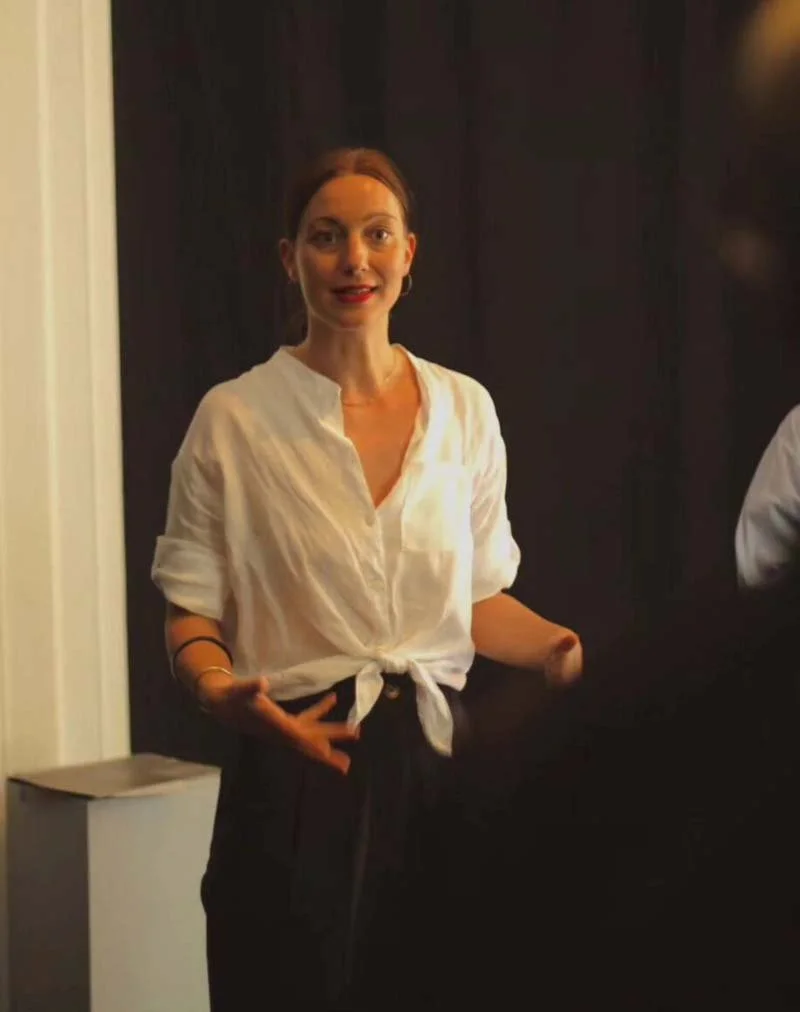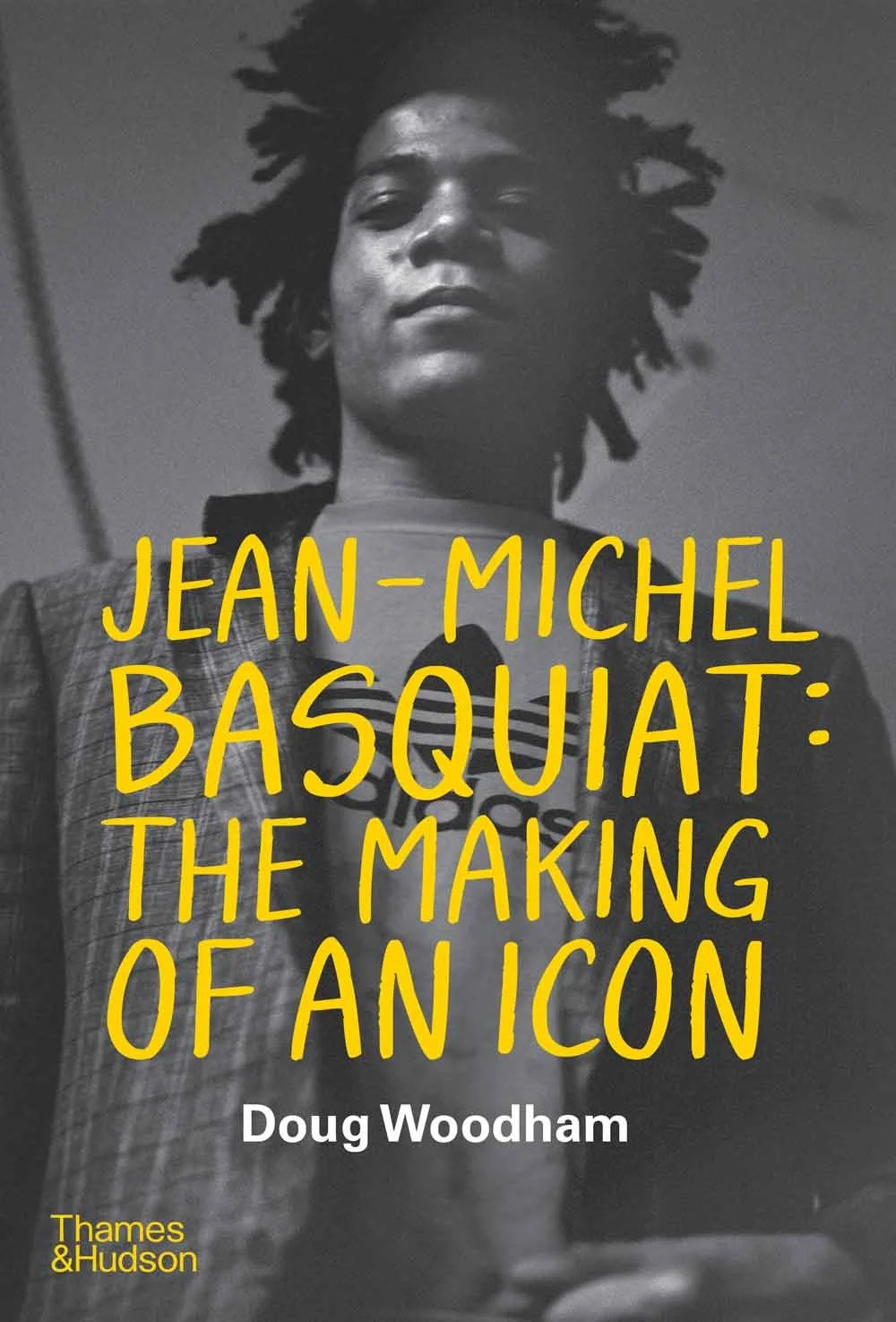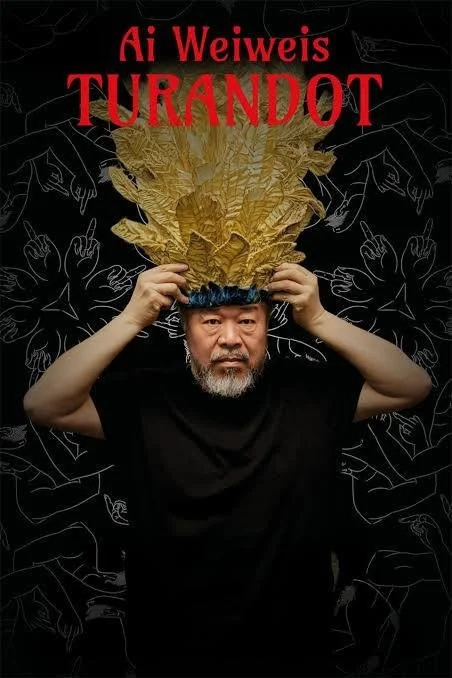Nisha Merit von Carnap has curated solo and group exhibitions that intersect methods, materials, and spaces, incorporating performance, conversations, writings, and installations.
She previously held positions at SWAG magazine (Associate Editor, 2021–22) and A4 Arts Foundation, Cape Town (Production & Artist Residency, 2018–2021). With over ten years of independent curatorial practice, she has collaborated with institutions such as Galerie im Körnerpark, Market Theatre Johannesburg, PhotoFest Lagos, Moussem Brussels, Johannesburg Art Gallery, SAVVY Contemporary Berlin, Theater Ballhaus Naunynstrasse Berlin, and Political Beauty. She has worked with artists including Roland Gunst (BE), Slindile Mthembu (SA), Igshaan Adams (SA), Kevin Beasley (USA), Gian Maria Tosatti (IT), Theresa Schubert (DE), MADEYOULOOK (SA), Natalie Paneng (SA), Silvia Noronha (BR), and others.
She publishes artist interviews and has written for academic publications and art magazines (Art Africa Mag, SWAG, Lost Libraries, Burnt Archives), as well as exhibition concepts and deep research. Holding a B.A. in Cultural Studies (FH Potsdam, Germany) and an M.A. in Art History (Wits University, South Africa), her practice is rooted in an expanded curatorial approach, emphasizing process and interdisciplinary collaborations through exhibition-making, curatorial research, and writing. In 2021, she founded Merit Art Collective, a trans- and interdisciplinary organisation for artistic and creative engagements, research, and exchange between creatives, modes, and places.
You describe your relationship with art as a cycle of falling in and out of love. Was there a particular moment or experience that first sparked this ongoing romance?
I continuously fall in and out of love with art. It’s a hot lover that burns you if you stay too long, but also, you just can’t get enough. Clearly, a lack of healthy boundaries…
The one constant is my curiosity for it. That’s the thing that drives me. The fact that I will never fully understand it yet have the most pleasure trying to figure it out. But maybe I am just a recidivist in sabotaging myself.
It's our reflection. It’s the material we negotiate our understanding of the world, a product of its time and place, it is the way we review our past. It is the one form (visual and musical) that lets you experience the subtle, the transcendental, the magical.
Your practice spans writing, research, and exhibition-making. What does a typical day look like for you—and what part of that do you find most rewarding? Even though the word curator has been thrown around and attributed to all kinds of happenings, a lot of it is not that glamorous. The process entails a lot of researching, reading, asking all the dumb questions, and eventually putting something cohesive together.
My curatorial process often starts somewhere at the intersection of a hot mess and structured research. Reading, seeing, diverting, getting lost, panicking is all part of the process in order to understand what the idea is all about. It is not “just” selecting artworks, it is unravelling their granularity and story in order to thread them together in time and space through the curatorial lens or curatorial theme.
I love openings, dressing cute. I do appreciate the celebration, the community coming together, all that.
You founded Merit Art Collective in 2021. What are you currently exploring through that platform—and elsewhere? Merit Art Collective, an interdisciplinary organisation for artistic and creative engagements, research, and exchange - it is a shared attitude. We support, create, and produce. Our work unfolds through four intertwined spectrums combining: a global network of independent creatives, a research initiative, an institution that produces projects, residencies, and interventions and a bureaucratic funding tool for active members. And I am writing again, which brings me so much joy. Often artist interviews but also reviews and field notes.
The work of art most important for me is the work that I cannot make sense of but does something visceral. The work I lose myself in, that I want to own. It’s like falling in love, the stupidly, naive and all encompassing teen love.
If you could have a long conversation with any artist—past or present—who would it be, and why? Frida Kahlo, not so much the artist she is celebrated for today (the commercial, replicas and gimmicks). But the person, hands down, she must have been such an amazing mind, scary as in powerful and beyond fascinating.
A great thing about living in Berlin and Johannesburg is…
There are two places I call my cities, and they both are pretty complex metropolises. Berlin and Johannesburg. Great cities, very very different yet they have a similar vibe to them somehow. Don’t ask me to explain it, it’s something only the body recognises. Most places come down to people and I am extremely fortunate to have great people in both. You know that feeling when your movements start to tune into the city's rhythm?
The main characteristic of a good curator is...
Be a conduit, don’t take yourself so seriously, play.
What is your favourite epoch? The one to come.
Growing up in an open-minded household, how has that environment—and your cross-cultural education—informed your approach to curating? I wouldn’t say that my background influenced my work in a direct way. I am however a product of my environment, which continuously is shaping my views and ideas of Self and the world. I was talking to my mom about language and I was stunned by how much we have in common yet belonging to different generations our worldviews are shaped differently. I think it is really important in general but especially for a curator to be able to step into various different ideas that might not necessarily be once own experience but instrumental to share in order to offer a multiverse. I was fortunate that I grew up in a very open minded household that taught me to be curious and to question.
Exhibition-making can be both idealistic and logistical. How do you work through constraints like budget or venue size without compromising the concept? Curatorial concepts on paper are exciting and so fabulous but they don’t do much if you are not prepared to negotiate between all protagonists - artworks, space, the psychology of them talking to each other, etc. For me an exhibition is not the finished thing, it morphes and changes. Thus every constraint becomes an invitation to rethink, be super agile and resourceful. In most cases, a solution will emerge along the way.
Do you see galleries and museums as active agents in the conversations around contemporary issues—or is that responsibility shifting elsewhere?
Most institutions follow an agenda, be it financial because they are literally a business, or visitor numbers or their funders’ vision etc.
We should not forget that, and while many museums and galleries might do a great job in consciously partaking in contemporary issues, they do have to sell. So it is a bit naive I think to hold them to such a high standard or think they would do something completely altruistic. And it’s okay, a business has to survive. All that is to say, I see critics, artists, curators, writers more important to shape public perception of contemporary social issues. I believe in the power of the streets (metaphorically speaking) but still the institutions should reflect what is happening outside.
Not sure if I necessarily balance educational and aesthetic aspects. They are both inherent in artworks. The lens, the presentation enhances the type of reading in a way but I believe we should also trust that the kids understand and are capable.
You’ve worked with artists across continents and disciplines. How do you foster collaboration while honoring their individual vision? Lots of talking, negotiating, and sharing of processes. It’s the humanness and respect for the idea itself, if that is given, the place for the new emerges and can be used by all. Some arguments, misunderstandings and a shared bottle of wine later but really, it is a very personal trade to be able to be that conduit.
Whether you're working in a theatre in Berlin or a backyard in Joburg—how do you make sure exhibitions connect meaningfully with the community they’re in? This very much depends on the space in which the project is exhibited. I have produced shows in museums, public galleries, in backyards, theatres or online. Each locality already brings a different audience. Each topic, artist and personal network brings yet another group of people. If all people participating in the project feel invested and seen then they will bring their own community too.
Thus, I always go from the immediate connection outwards and trust that what is exhibited will attract people that are interested, intrigued by it. Awareness of exclusivity and barriers in the artworld is important but I think diversity has to go beyond the categorisation of people and the tendency of ticking the boxes.
Rather than a single mentor, you’ve built a constellation of support. What has that taught you about collaboration—and what would you say to those just entering the field? There is not one mentor, I have a wonderful community of people - in and outside the arts - that give me their time, ear and feedback. I have learned to share the process of ideas and projects with them and add their viewpoint to my considerations. Nothing happens in isolation, it is always a collaboration. Because of that, I have established Merit Art Collective with some of these amazing minds I call my friends. The idea that we all have a wealth of knowledge and if we share them, we can only grow.
To young professionals I would say that it is important to grow with your peers and not to see them as your competition.
How do you approach the development of new exhibitions?
It depends what the initial departure point is, what ignited the exhibition idea in the first place. But in general it is lots of reading, looking around and very important, getting lost. Best moments of clarity come when you have no idea where you are.
On a practical note is to start with a question and visually approach it from different sides, not to answer just to get close and then of course - artworks - space - budget - timeline and plan b, c and d.
As someone who’s engaged with collections both critically and creatively, what are your thoughts on how we handle and interpret them today? Curatorial practices come down to storytelling, the ancient idea of sharing something. I find today's idea of curating an exhibition is often presented as an answer, truth or conclusion. I rather see it as a chapter, as something profoundly important and life shaping, but it is just a part of the ecosystem of life.
Collections management is an interesting one - have you ever thought of all the space archives and collections are taking up? All the things we might never actually see or know about because of the sheer amount of things? It’s mind boggling. I am always humbled when I enter an archive, it’s special but also a bit perverse. I think it is really good that so many collections are contested right now, the whole idea of how and what to collect. I appreciate when collection information is public, it is really wonderful when I can loan a work and show it which is otherwise in private hands for example.
As AI reshapes creative industries – the way we see the world, creativity, authorship, our ideas of beauty – how do you see its role in the future of curatorial work—and what place does the handmade still hold for you? AI is certainly a wonderful tool that makes things much easier, faster and more immersive. But we also shouldn’t forget that AI is trained and formed by us humans. We do need to take the responsibility of how AI reflects back on us, answers us. The biases we teach it, etc. … But it is super exciting in terms of worldbuilding and visualisations beyond the human.
For me it is often the granularity and traces of physical work that makes a huge difference. The depth and warmth. It’s similar to the discussions between analog and digital photography. I like when you can see the traces of the making in the material and not just in the code.















































































